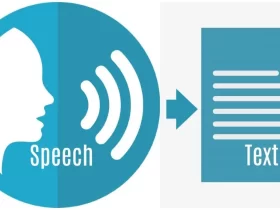Are you a human resource manager who wants to conduct a skill gap analysis in your company? You have come to the perfect place then. Conducting a skill gap analysis is useful and important for many reasons. It helps you understand your employees and their needs and requirements better. Moreover, it improves and encourages learning and development.
With a skill gap analysis, you can conduct strategic workplace planning. It can also assist you in the recruitment process by assessing the skills of candidates. Moreover, you can create an effective training management system with a skill gap analysis. Furthermore, it can help you determine workforce areas that need improvement.
Here is how you can conduct a skill gap analysis on your company in 2023.
1. Create a Plan
The first step to conducting a skill gap analysis is to create a plan. One of the aims of skill gap analysis is to measure the important skills of each employee at the company. Therefore, you should monitor how teams are working with each other to achieve goals.
In order to do this, you can create a plan that comprises a list of employees closest to their teams. These can be department heads who can offer insights into each team’s progress. Skill gap analysis can also be carried out on two levels—at a team level and an employee level. This way, you can identify where the skills gap exists the most.
2. Set Goals

Since the entire purpose of a skill gap analysis is to identify skills gaps, you should first set goals. Setting goals will give you a sense of direction on how to conduct your plan. To assess your workforce holistically, you may need to look at the bigger picture. These can include revising mission statements and workforce objectives.
Once you have done this, you can ask yourself where you see the company in the next five to ten years. This is a great way to set goals to conduct a skill gap analysis. These goals can even include special skill sets you want your employees to have. Moreover, you can even set the outcomes the company expects from its employees.
3. Look at Future Work Trends
Just envisioning your company’s position in the next ten years is not enough. You must research and be up to date on current and upcoming industry trends.
For example, think of how automation can impact the nature of jobs and can even end the necessity of some. Research on how skills in the future can change or look like. You can even refer to global reports to get a better insight into your industry’s trends.
4. Measure Your Employees’ Current Skills
The next step in conducting a skill gap analysis is to measure the skills of your employees. Think of the KPIs (key performance indicators) that you want to measure. How will you measure their current skills? Will you use surveys or tests? You can have one on one conversations with employees to asses their skill levels.
A great way to measure employees’ skills is to use a learning management system. You can set up assessments to measure their current skill set and knowledge. Not only is it a great measuring tool, but it is great for employee training management. It will give you an idea of which skill sets need improvement.
5. Search for Gaps
Once you are done setting goals and measuring your workforce’s current skill set, you can now identify the skills gaps. Figure out how and where the goals and employees’ current skills do not align with each other.
Based on your skill gap analysis, you can come up with solutions to meet the needs and requirements of your company. For example, if you feel there will be a decline in quality and production due to skills gaps, you can devise solutions for them. This way your business can prioritize the immediate needs of the present and those of the future.

To further explain what a skills gap may look like, let us look at more examples. When employees are new, they do not have the technical skills required to run certain software. Moreover, they may not have the skills needed for machinery that is set for operation in the next five years.
Another example can be how current employees are not staying up to date on industry trends or changing market landscapes. As a result, skills gaps will be present. Keeping these examples in mind, you can now conduct a skills gap analysis in a more efficient manner.
Conduct a Skill Gap Analysis With Atrixware’s Learning Management System
If you are in search of learning management platforms, check out Atrixware. They are known for their elearning management system and LMS for manufacturing. For more information, get in touch with them now.






